Targeting microRNA with next-gen AMO to treat Diabetic Foot Ulcers
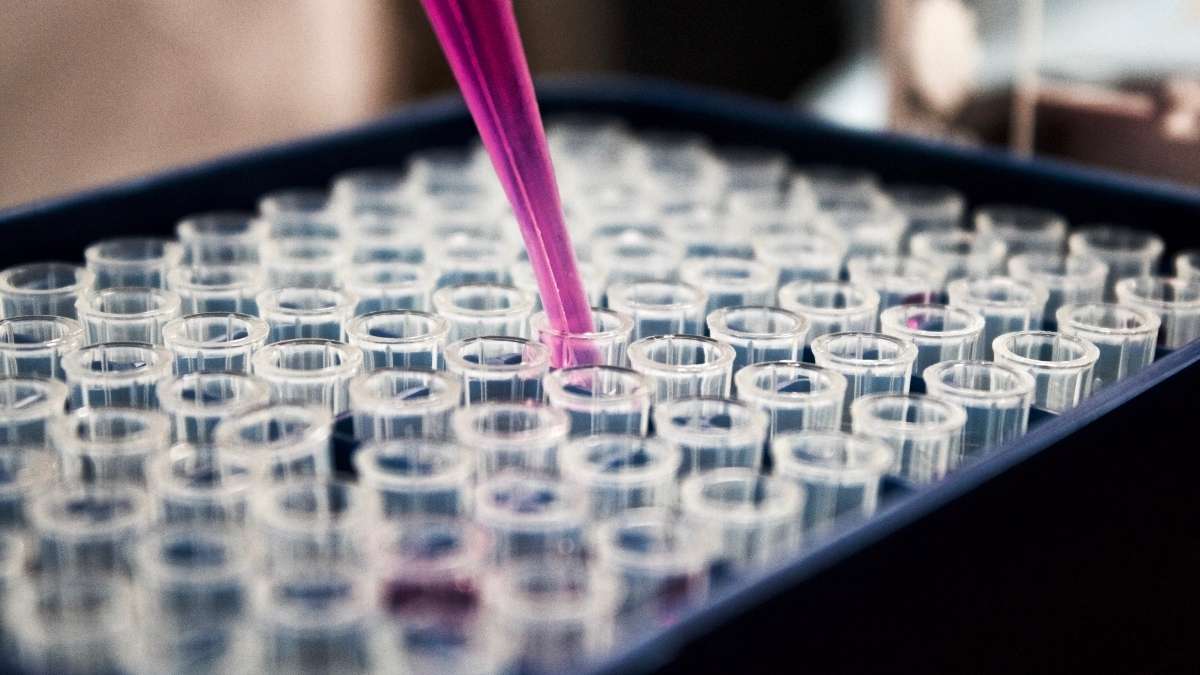
Efforts to advance wound healing treatments with microRNA technology are being led by Dr. Prabha Sampath from A*STAR Skin Research Labs in Singapore and Celligenics, a Singapore-based spin-off specializing in stem cell-derived regenerative technology.
The partners signed a S$2.1M research agreement in February 2022 to validate the use of miR-198 anti-miRNA oligonucleotides (AMO) for treating diabetic foot ulcers (DFUs) and developing cost-effective wound healing therapies. The idea is to accelerate wound healing and reduce the instance of complications such as amputations.
What are Diabetic Foot Ulcers, and why are they a challenge?
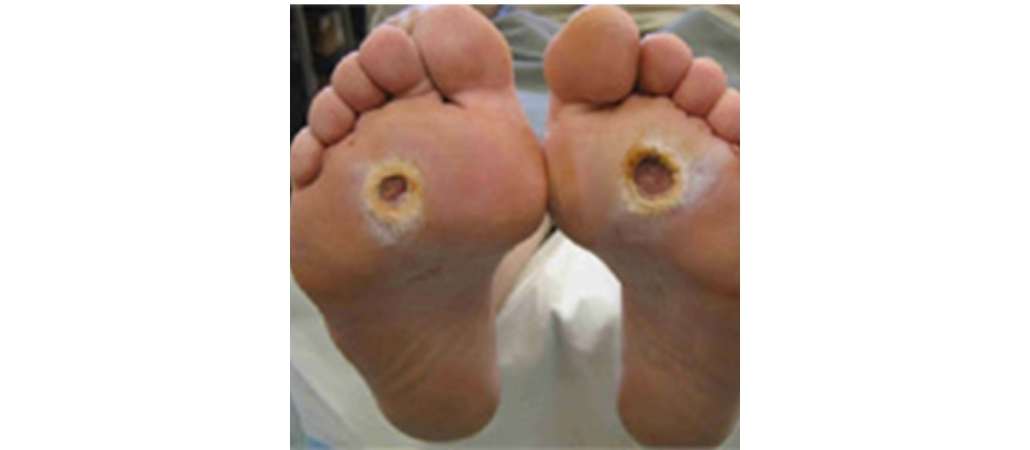
Diabetic patient with non-healing foot ulcer.
Diabetes-related complications are on the rise
Apart from Diabetic Foot Ulcers, other types of chronic wounds include pressure injuries and venous leg ulcers. Roughly 150,000 Singaporeans are affected annually with chronic wounds, causing a healthcare burden of about S$350M.
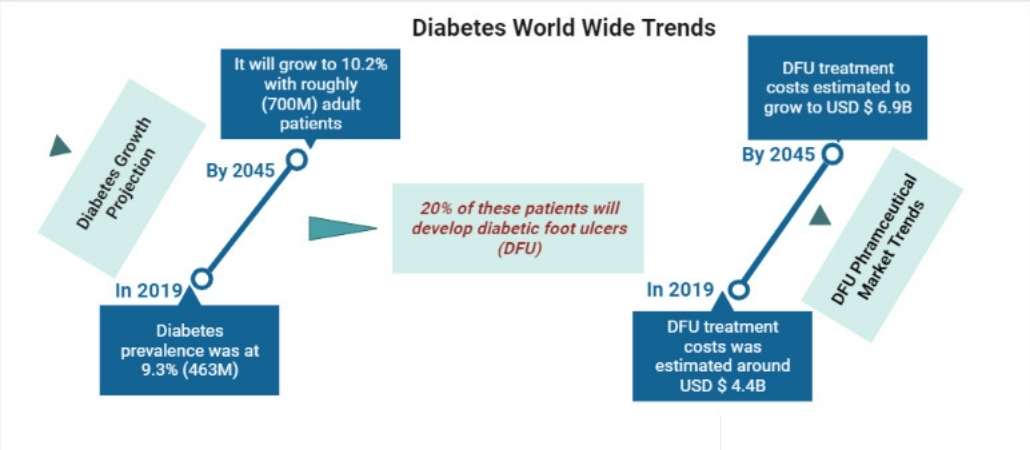
Our interest in miR-198 anti-miRNA oligonucleotides (AMO) is attributed to its ability to regulate healing in chronic wounds, which are generally difficult and slow to heal, by correcting their pathophysiology into that of normal wounds. Combining this breakthrough technology with our platform technology, with the latter greatly accelerating wound healing, provides us with the potential to develop a formidable combination protocol that will address global chronic wound diseases
Mr. Winston Lumenta, Head of Corporate Development at Celligenics
Current Treatment of DFU
However, clinical statistics paint a grim picture – Within 3-5 years, 65% of patients return to clinics with non-healing wound ulcers at the same or different sites.
Micro RNA and Chronic Wounds – The Science
miRNAs are small non-coding RNAs (~22 nucleotides in length) that bind to messenger RNAs (mRNAs) and regulate gene expression by altering protein synthesis. In other words, they play an important role in our bodies, enabling some activities to go ahead and others to stop. Importantly, aberrant miRNAs are linked to many diseases such as cancer, cardiovascular disease, and immune disorders. Since the discovery of the first functional human miRNA, let-7, in 2000, the race to develop functional and effective miRNA-based therapeutics for various diseases has increased exponentially.
In 2013, Dr. Sampath and her team discovered miR-198, a miRNA that acts as an “On/Off switch” regulating wound healing (Nature Publications).
In healthy, undamaged skin, miR-198 is abundant throughout the epidermis (the outermost skin layer). This miRNA restricts the movement of the epidermal skin cells (keratinocytes) and keeps the skin in its steady-state condition. Upon wounding, miR-198 is rapidly cleared from the epidermis, this event allows new keratinocytes to move across the wound bed and repair the skin. This on/off state can be compared to a seesaw.
In diabetic ulcers, the switch mechanism or “seesaw effect” is impaired, consequently retaining miR-198 in high numbers at the wound edge. This stops the keratinocytes from moving into the wound bed to repair the damaged wound leading to inadequate wound closure and delayed wound healing. (see cartoon below).
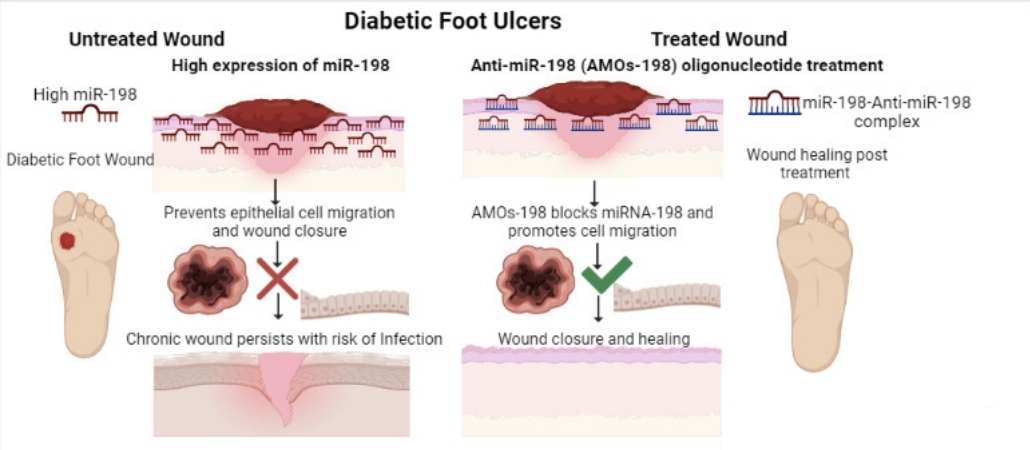
AMOs-198 derived biologics with Celligenics
Dr. Sampath and her group has developed anti-miR-198 (AMOs-198) that block the action of miR-198 with high specificity, leading to effective keratinocyte migration and wound closure, making it suitable for developing biologics to support wound healing.
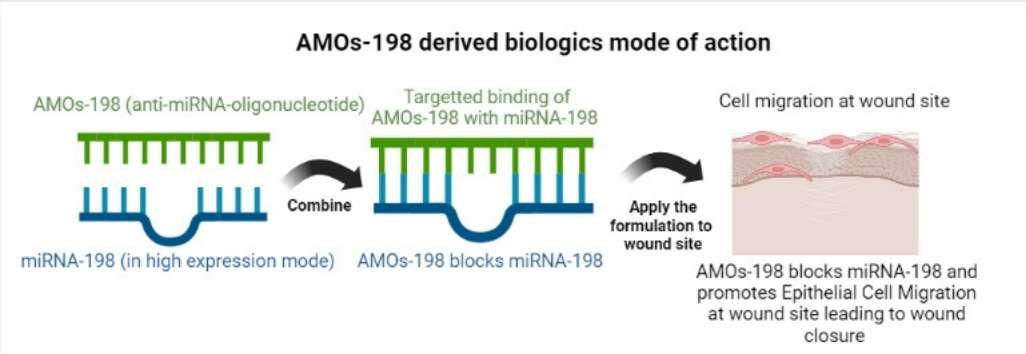
How far are we with developing the biologics?
With her domain expertise in the field, Dr. Sampath will drive the collaborative research effort and anticipate the future commercialization of AMOs-198 as a potential innovative wound healing solution that significantly improves the quality-of-life of patients with diabetic foot ulcers.
A*STAR celebrates International Women's Day

From groundbreaking discoveries to cutting-edge research, our researchers are empowering the next generation of female science, technology, engineering and mathematics (STEM) leaders.
Get inspired by our #WomeninSTEM
